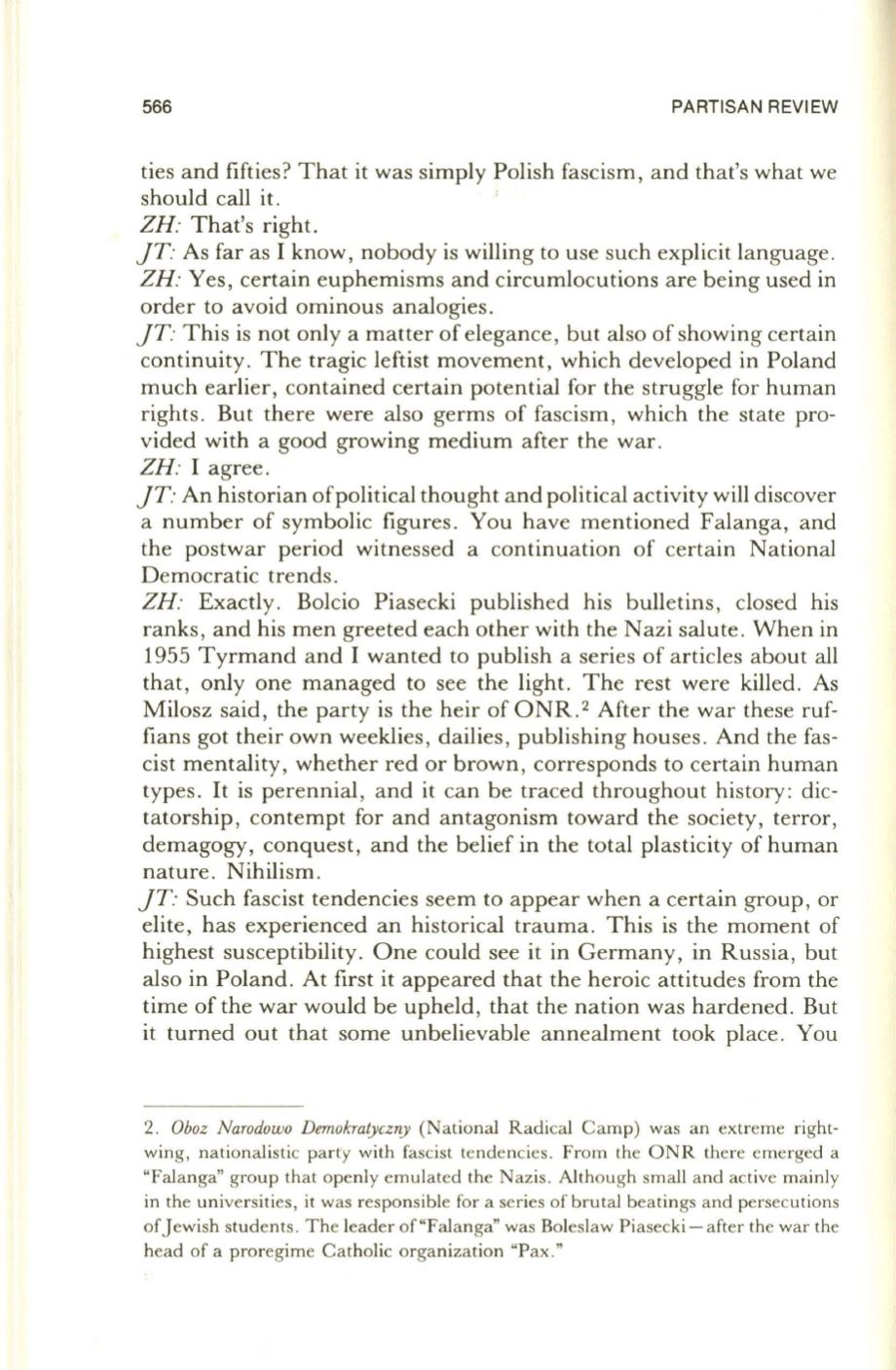
566
PARTISAN REVIEW
ties and fifties? That it was simply Polish fascism, and that's what we
should call it.
ZH:
That's right.
JT:
As far as I know, nobody is willing to use such explicit language .
ZH:
Yes, certain euphemisms and circumlocutions are being used in
order to avoid ominous analogies .
JT:
This is not only a matter of elegance , but also of showing certain
continuity. The tragic leftist movement, which developed in Poland
much earlier, contained certain potential for the struggle for human
rights . But there were also germs of fascism , which the state pro–
vided with a good growing medium after the war.
ZH:
I agree .
JT:
An historian ofpolitical thought and political activity will discover
a number of symbolic figures . You have mentioned Falanga, and
the postwar period witnessed a continua tion of certain National
Democratic trends.
ZH:
Exactly. Bolcio Piasecki published his bulletins , closed his
ranks, and his men greeted each other with the Nazi salute. When in
1955 Tyrmand and I wanted to publish a series of articles about all
that, only one managed to see the light. The rest were killed. As
Milosz said, the party is the heir of ONR.
2
After the war these ruf–
fians got their own weeklies , dailies, publishing houses . And the fas–
cist mentality , whether red or brown , corresponds to certain human
types .
It
is perennial, and it can be traced throughout history : dic–
tatorship, contempt for and antagonism toward the society, terror,
demagogy, conquest, and the belief in the total plasticity of human
nature . Nihilism .
JT:
Such fascist tendencies seem to appear when a certain group , or
elite, has experienced an historical trauma . This is the moment of
highest susceptibility . One could see it in Germany, in Russia, but
also in Poland. At first it appeared that the heroic attitudes from the
time of the war would be upheld, that the nation was hardened. But
it turned out that some unbelievable annealment took place . You
2. Oboz Narodowo Demokratyczny
(National R adical Camp) was an extreme right–
wing, nationalistic party with fascist tendencies. From the ONR there emerged a
"Falanga" group that openly emulated the Nazis. Although small and active mainly
in the universities, it was responsible for a series of brutal beatings and persecutions
ofJ ewish students. The leader of "Falanga" was Boleslaw Piasecki - after the war the
head of a proregime Catholic organization "Pax."


